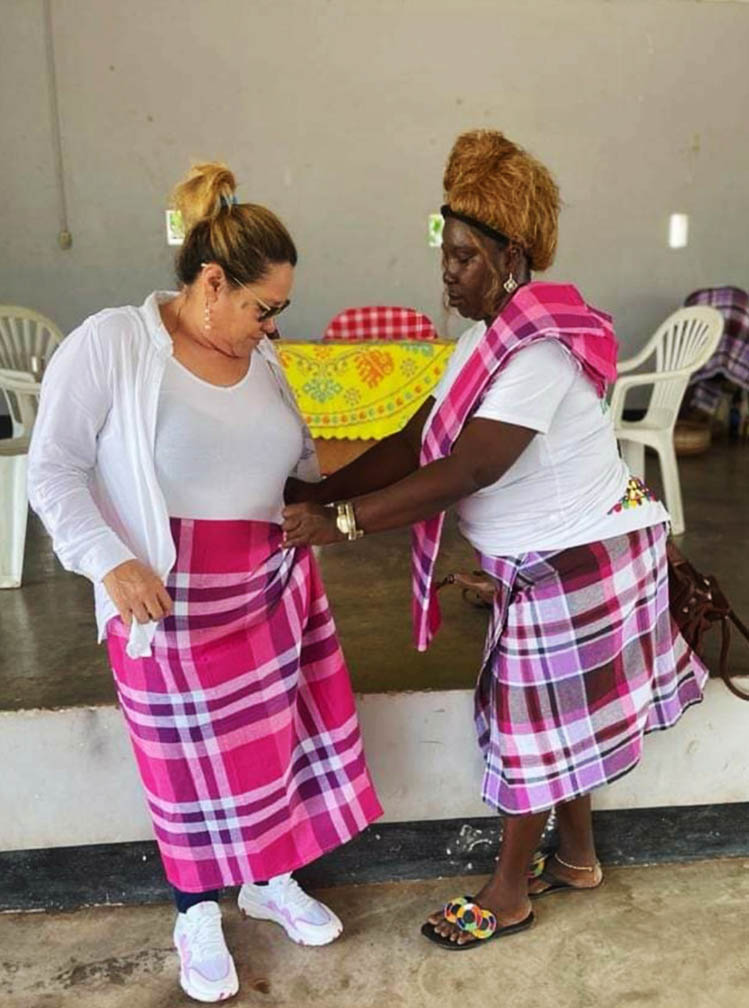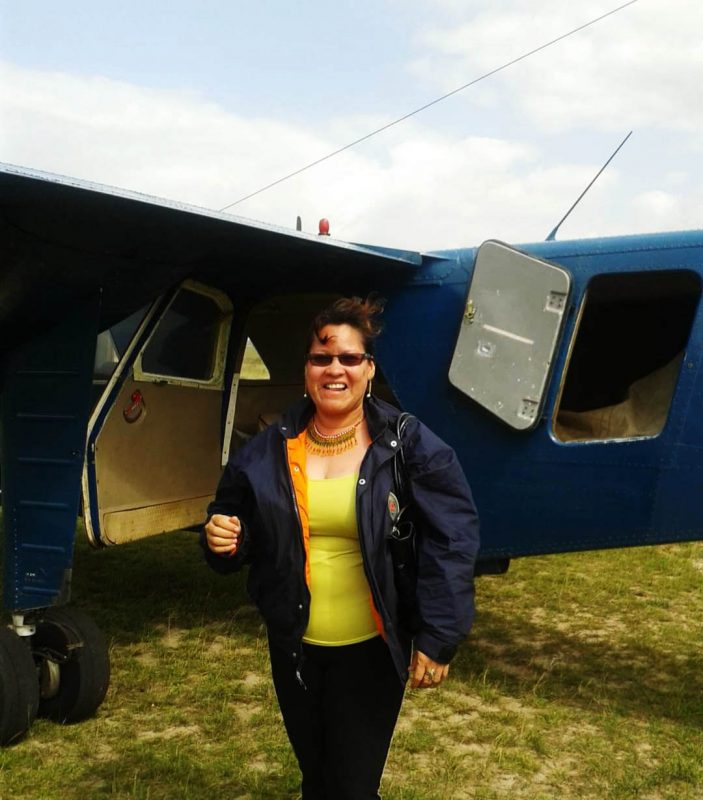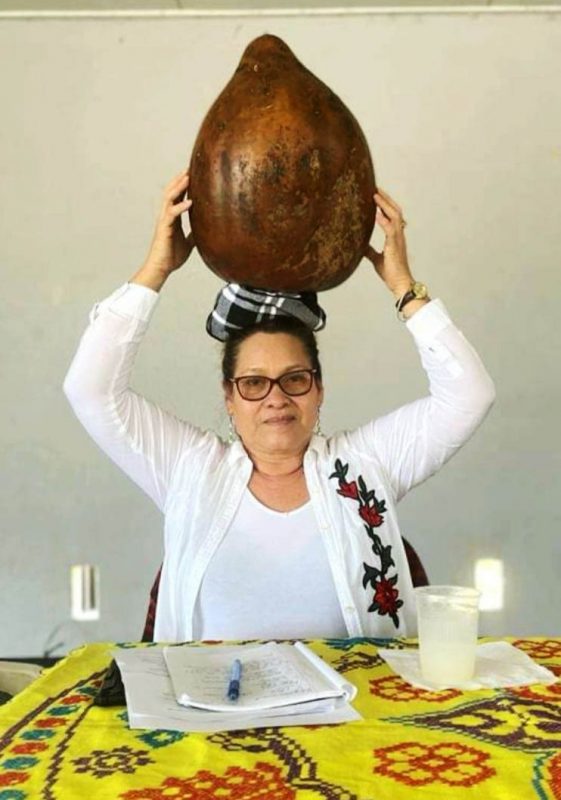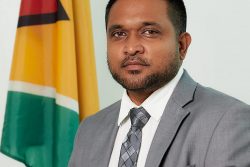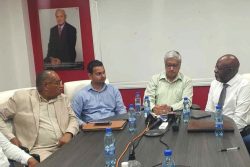A programme manager with the Delegation of the European Union to Guyana, Jude B Da Silva has ended up right where she dreamed she would when she was a teenager in Santa Rosa, Moruca, Region One.
Da Silva, 58, recalls that she always imagined herself working in an office. “I once borrowed a typewriter from Santa Rosa parish priest Fr Petry to teach myself typewriting. He told me to take it back by 4 pm the next day. I didn’t because I was enjoying learning to type. The following day, he just walked into our kitchen and took it back. I knew in my heart I wanted an education and where I am today is exactly what I wanted and how I saw myself,” Da Silva told Stabroek Weekend during a recent interview.
By dint of perseverance – and some restlessness – she pursued a tertiary education by taking advantage of correspondence courses and some offered by the University of Guyana (UG) Institute of Distance and Continuing Education (IDCE), which enabled her to gain entry to the UG. Today she is the holder of a Diploma in Public Management, a Bachelor’s Degree in public management and a Master’s Degree in business management.
Da Silva’s early education was at Santa Rosa Primary School, where after writing the secondary school entrance examination she was placed in the school’s secondary department, where she wrote the Preliminary Examinations and then the Secondary Schools Proficiency Examinations Parts I and II. She left school at 16 years.
Afterward, she was looking for an opportunity to continue her education outside of the community of Santa Rosa, Moruca while trying to earn an income. “I used to mind local chicken at home and sell their eggs. Even in school, when I wanted books, I made fudge and mittai and gave my aunt, Tr Gina, who sold them at the school.”
Her mother, Glerie Da Silva, she said, “Was my biggest motivator. She impressed on us the need for a good education. She often told us, if you have a job you don’t have to depend on anyone else. She was good in English and helped us with it. Despite the hardships she ensured, as a single parent of six children, she always ensured that we got our school uniforms and school supplies. Up to a day like today she still cheers me on.”
After a five year hiatus and becoming somewhat depressed at the lack of opportunities to continue her education, an aunt, Elinor La Rose who was living at Anna Regina, Essequibo Coast, visited her mother at Cabucalli in Santa Rosa.
“While visiting, she asked my mom, ‘What you doing with that young girl in the house?’ I was happy to hear her ask that question. When Auntie Elinor was leaving, I ran behind her and asked her if she could ask my mother to allow me to go to school in Anna Regina. She asked my mom, who agreed. That was the best news I had and I went with her. She didn’t charge me a rent. Anything she gave her children, she gave me. She treated me like hers and insisted on all of us studying together.”
At Anna Regina, Da Silva attended classes at Granville Commercial School. She subsequently did a number of courses, including English Language in which she got a distinction, computer studies, catering and supervisory courses offered by the IDCE.
“While I was living at Auntie Elinor, on Fridays I bought greens and I used to go down to Charity and send them home by boat to Cabucalli, where my mom sold them and sent the money to me on Saturdays.”
Da Silva was subsequently employed with the Regional Democratic Council, Region Two – Pomeroon/Supenaam as the registry clerk. She then worked as the confidential secretary to the principal of Anna Regina Multilateral School.
During her stay in Anna Regina, Da Silva got married and bore a son. In 2000, after a separation she moved to Georgetown. “If I was not working for my own money when I got a divorce I would have been in the wilderness. I didn’t know what life was going to be like in Georgetown but there I was looking for a job.”
She saw the Office of the President advertising for a programme administrator/secretary for the Government of Guyana Amazon Programme, which fell under the Ministry of Amerindian Affairs (MoAA), applied and got through. The MoAA at the time operated out of the Office of the President. The programme had several components to it including health, education and Indigenous community development.
“So I started working in Indigenous communities in Regions Seven-Cuyuni/Mazaruni and Region Nine-Upper Essequibo/Upper Takutu. However the programme ended two years after I began working there. That’s how my development trajectory into management and administration began in 2000.”
UG/UNICEF
Her supervisor was the technical cooperation officer, Dr Mary Summers Thompson who coached her on the job and encouraged her to pursue a programme at UG. In 2001 while on the programme she applied and gained entry to do the diploma in communications. Her happiness at the entry to UG was short-lived. After a brief start she could not continue because the courses were during the day and she could not get time off the job.
Dr Thompson then advised her to seek a transfer for an evening programme.
“I was up and down getting a difficult time to get a transfer. I was on the verge of giving up when I saw a man in the corridor coming in my direction. I stopped him and I told him about my plight.” The man was UG lecturer Freddie Kissoon, who told her to give him her documents and to await his return. On his return he told her to sign up for the transfer and showed her the options. She signed up for the diploma in public management, which started the same afternoon.
“If it wasn’t for him, I would have given up. I don’t know if he could remember that but I never got the opportunity to thank him.” She completed the diploma then read for the bachelor’s degree in public management and graduated in 2006.
Towards the end of the Amazon programme, while contemplating her future, the representative of UNICEF in Guyana at the time offered her a job as registry clerk/receptionist. The Amazon Programme office was located in the UNICEF building in Brickdam, Georgetown.
“Even though it was as a registry clerk/receptionist job, the pay was better than what I had been earning as the programme administrator. I spent one year as the registry clerk and receptionist and when a vacancy for a programme assistant arose, I applied and got the job. I worked there with projects, public policy, monitoring and evaluation and later in the child protection unit, where I learned a lot about domestic violence, violence against women and child abuse.”
She spent 13 years at UNICEF during which time she read for the master’s degree and graduated in 2013.
“In the local UNICEF office there was no upward mobility. If you are a programme assistant you could not be promoted automatically to a programme officer or programme manager except under extreme circumstances. I became frustrated again and I wasn’t enjoying the job anymore.”
Ministry of Amerindian Affairs
Looking for opportunities, she saw the Ministry of Amerindian Affairs advertising the vacancy for a programme coordinator. She applied, was called for an interview and was offered the job. She resigned from UNICEF in 2013.
Then permanent secretary, Nigel Dharmlall, her supervisor, she said, told her that the ministry might not be able to pay her what she earned at UNICEF but she had the opportunity to travel to Indigenous communities countrywide and make a positive contribution to their development.
“He pushed me every step of the way to ensure I delivered. That was when I realized how many things I could have gotten done. I spent a lot of time in the fields and visited about 200 communities. The experience helped me to embrace my indigenousness more and more. I enjoyed working with the toshaos on their projects. I did a lot of technical work and supported the then minister, Pauline Sukhai. I was part of the policy-decision making body of the ministry.”
In 2015 after Dharmlall resigned from his post, Da Silva performed the duties of the permanent secretary in an acting capacity.
“When the APNU-AFC government took office in 2015, they took away my acting appointment, appointed a substantive permanent secretary. I continued my work as programme coordinator, until about six months later when I became involved in the work again at the policy level.”
“Things had become tough for me at the ministry. A vacancy for a project manager had arisen at the ministry. The person who held the post had resigned.
“Initially, I was part of the team that developed the project document and part of the interviewing panel that recruited that person. The work had to do with Indigenous communities and the projects funded under the Amerindian Development Fund.”
She applied but was not successful and was upset at not being considered based on her qualifications and experience. “I raised it in meetings and with the ministers in the then Ministry of Indigenous Peoples Affairs. They gave me no satisfactory response. I couldn’t stay there. I started looking out for another job and then the then chairman and vice chairman of the National Toshaos Council (NTC) Lenox Shuman and Joel Fredericks told me they needed an executive director of the NTC secretariat.” She resigned from the ministry in 2018.
NTC
She joined the NTC Secretariat as its executive director and put in place the payroll and accounting system, and the registry.
“This new NTC will get a professional office with all the systems in place. This is what I brought from my past experience at Anna Regina Multilateral School, UNICEF and the MoAA. I left projects ongoing including the construction of the NTC Secretariat at Sophia which is almost completed. I worked on that initially with Shuman and Joel Fredericks and followed up under the immediate past chairman Nicholas Fredericks, who continued to press the government of the day for support. The building is being constructed by the MoAA.
At the NTC I saw the importance of consultations and the need for inclusion of Indigenous Peoples input. “As the toshaos were out of town, I sat in at many meetings on their behalf to get information and to share with them because I was not a toshao. I worked behind the scene providing advice and guidance all the time.”
Da Silva helped to develop project proposals and was involved in resource mobilisation and received funding from the Canadian High Commission, Conservation International and Nia Tero, a US-based organization working with Indigenous Peoples and movements worldwide. “Jean La Rose and I were the regional advisors to Nia Tero.”
While at the NTC she saw the opportunity and applied to fill the vacancy of a programme manager at the office of the Delegation of European Union in Guyana. She joined the Delegation of the EU in September last year.
“I got the job which calls on my skills, knowledge and experiences I have had. I am one of two Guyanese programme managers. I am responsible for civil society, gender, human rights, democracy and nutrition for Guyana and Suriname. Another project manager is responsible for the Guyana file and he deals directly with the Guyana Government, EU Forest Law Enforcement, Governance and Trade and the Spotlight Initiative.
“Although the job is demanding and a lot of work, I enjoy it.”
